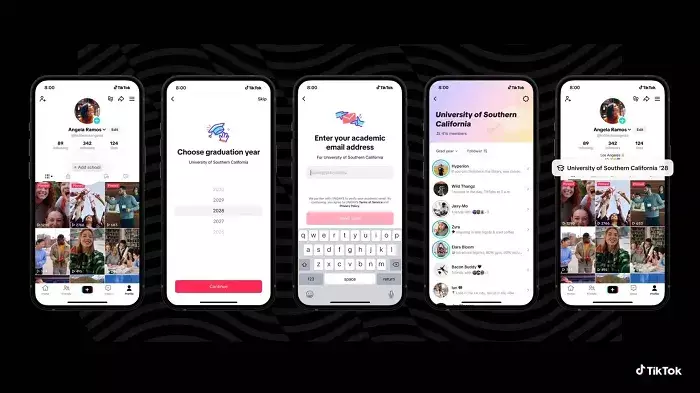As the college season kicks into gear, social media platforms continue to innovate, aiming to bridge the gap between virtual presence and real-world interactions. TikTok’s latest feature, “Campus Verification,” signifies a strategic shift toward fostering authentic peer connections within a familiar digital environment. Unlike ephemeral trends or fleeting viral videos, this initiative underscores a broader vision: leveraging technology not just for entertainment, but for meaningful network-building among students. In essence, TikTok is betting on its enormous youth user base to transform its platform into a vital tool for early-stage social integration, which historically has been a challenge for digital apps trying to cater to diverse campus communities.
This new feature offers students a way to authenticate and showcase their college affiliation directly on their profiles, allowing peers to search and connect based on shared educational backgrounds. By doing so, TikTok positions itself as a facilitator of friendships, mentorships, and communal engagement—elements crucial for students navigating the often-overwhelming transition to higher education. Such an approach recognizes the undeniable influence of social validation and common identity in reducing feelings of isolation—a problem many students face at the start of university life.
Building Trust Through Verification and Security Measures
A notable aspect of TikTok’s “Campus Verification” is its emphasis on authenticity. To mitigate the perennial problem of imposters and fake profiles infiltrating campus spaces, the platform employs a system that validates students through their college-issued email addresses, augmented by collaborations with UNiDAYS, a reputable student verification service. This layered approach illustrates a conscious effort to enhance trustworthiness—an essential factor for a feature of this nature to thrive. Given past issues with similar initiatives, such as Facebook’s ill-fated “Campus” project, TikTok appears determined to learn from previous mistakes.
Yet, it’s worth questioning whether these security measures are ultimately sufficient. Verification processes often hit a wall when faced with students using personal or alternative email addresses, or when system glitches allow non-students to slip through. The challenge lies not only in establishing credibility but also in maintaining it amid an evolving digital landscape riddled with fraudulent attempts. TikTok’s ambitious plan to roll out this feature in over 6,000 U.S. universities demonstrates determination—but also raises concerns about the operational complexities and potential vulnerabilities of such a broad deployment.
Impact on Student Well-Being and Campus Integration
This feature’s success hinges on its capacity to genuinely aid students in forging connections rather than becoming a superficial tool for verification. The initial weeks of college are notoriously turbulent—a blend of excitement, anxiety, and uncertainty. Social bonds formed early in this period can influence academic success, mental health, and overall college satisfaction. By providing a trusted platform for students to identify peers with shared interests or backgrounds, TikTok could serve as a catalyst for organic friendships that transcend the digital realm.
However, it’s essential to acknowledge that technology can sometimes inadvertently exacerbate feelings of exclusion or competition. If students perceive the “most followed” indicators or filter by popularity, it could foster superficial relationships or social stratification within the campus community. TikTok’s challenge will be to craft an environment that encourages genuine engagement over surface-level metrics.
Furthermore, unlike traditional student orientation or campus events, this feature introduces a new layer of digital socialization, which might not align with every student’s preferences. While for some, it could be a lifeline to find comfort and belonging, others might prefer organic, offline interactions. Striking a balance between digital facilitation and fostering real-world community remains a delicate task.
Lessons from the Past and the Road Ahead
The comparison with Meta’s “Facebook Campus” is inevitable and instructive. Facebook’s attempt to replicate college spirit online ultimately floundered due to privacy concerns, limited rollout, and accessibility issues. TikTok’s broader reach and creative culture might give it a competitive advantage, but it also faces hurdles in ensuring inclusivity and safety.
The scale of TikTok’s launch—covering thousands of universities—signals a bold experiment in digital social engineering. If successful, it could redefine how social media companies participate in campus life. Yet, the stakes are high; failure to prevent misuse or mitigate risks could lead to regulatory scrutiny or damage to user trust.
TikTok’s “Campus Verification” initiative exemplifies a daring stride toward more authentic, community-oriented social media experiences. Its success or failure will largely depend on how well it manages security, fosters meaningful interaction, and respects the complex social dynamics of college life. This move underscores a broader trend: the digital realm’s increasing role in shaping personal relationships and community—an evolution that, if harnessed thoughtfully, could fundamentally enhance the university experience for millions of students.

